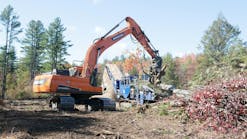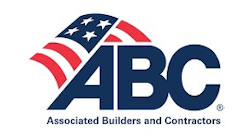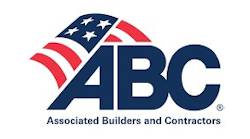The theft of heavy construction equipment continues to be a serious problem for the industry. Although the costs of this theft to the industry are not precisely known, most agree with the conclusion of the National Insurance Crime Bureau that close to $1 billion a year is lost nationwide due to the theft of construction equipment and tools. Moreover, a 2003 survey by Equipment World magazine showed that almost 70% of the respondents had experienced equipment theft.And, according to reports to Insurance Services Office Inc., the value of heavy-equipment thefts has been increasing by as much as 20% every year since 1996. As a result, theft now accounts for more than 50% of all causes of heavy-equipment losses. As shown in Figure 1, insurance claims for theft dwarf all the other types of risk for contractors. “While major equipment losses such as a crane collapse gain the attention of engineers and risk managers,” Glen Sider, operations manager for New York City–based National Equipment Register (NER) explains, “the cumulative cost of equipment thefts outweighs even these major losses.”There seems to be an increase in the number and sophistication of professional theft rings that have focused on the construction industry. “Professional thieves appear to be reselling the equipment to unsuspecting contractors or ëchopping’ the equipment into pieces for resale as spare parts,” says Kathy Kelleher, national sales manager for LoJack’s Commercial Division in Westwood, MA. “A recent incident reveals the scope of some of these operations.“On July 11, 2004, thieves broke into the offices of a generator company in Las Vegas and stole numerous tools, including a WhisperWatt generator that was mounted on a trailer. A report was made to the Las Vegas Metro police, and the [vehicle identification number] of the generator was input into the NCIC [National Crime Information Center], activating the LoJack transponder.“Four days later, Los Angeles County Sheriff deputies picked up the silent code of the stolen generator and tracked it to a business complex in Lennox, CA. After getting a warrant, the deputies entered the facility, took one man into custody, and recovered the generator.“But that wasn’t the only item recovered. There were literally hundreds of stolen pieces of construction tools such as small generators, saws, construction hammers, leaf blowers, mechanical tools, torches, hundreds of boxes of stolen clothing, a Yale forklift, and a stolen go-cart. Seven trailers were needed to remove the stolen equipment, and victims have been identified throughout northern and southern California and as far east as Kansas City. Detectives have estimated the value of this recovery to be over $3 million.”What attracts thieves to the construction industry? A number of reasons have been advanced:Titling and registration of off-road vehicles and equipment is not required.Equipment is only identified by product identification numbers, not the standard 17-digit vehicle identification numbers used for cars and trucks.There is a high demand for construction equipment.The penalties are low if the thieves are caught.It’s easy. There is often poor security: remote, poorly secured work sites on private land, “open” cab machines, and sometimes a single key will work on a number of pieces of equipment.
Bryan Witchey, vice president of sales and marketing for The Equipment Lock Company in Hedgesville, WV, emphasizes this latter point. “Stealing construction equipment has been made incredibly simple by the equipment manufacturers,” he says. “Each of them provides common keying in the form of a single key that fits both the cab door and the ignition of every construction vehicle they make. They do this for the convenience of their contractor customers; otherwise, if a key was mislaid, a machine could be unusable until the key was found, and it might well impede progress on the construction job during that period. However, with common keying, a thief can get a $3 key from a parts counter and with it gain access to literally millions of dollars’ worth of construction vehicles in the field.”Not only is it easy to steal construction vehicles from job sites, but nationwide, as little as 10%,15% of stolen heavy equipment is ever recovered, according to the NER’s Glen Sider. That’s just a fraction of the national stolen-auto recovery rate of 62%, as stated in the FBI’s Uniform Crime Report for 2000.Patterns of TheftIn its landmark 2003 Equipment Theft Report, the NER analyzes some of the patterns of construction-equipment theft. Based on over 4,000 theft reports submitted to the NER in 2003, the study determined that 33% of the thefts occurred in just five states (Texas, North Carolina, Florida, California, and Georgia). The report explains that “[t]he overriding factor in these statistics is the amount of targets available to thieves. Theft levels closely follow the amount of equipment in a particular area—the states with the highest volume of construction, maintenance, and agriculture have the highest number of thefts. This factor is likely to be amplified because areas with high concentrations of equipment attract more thieves, particularly professional theft rings. Theft rates in areas close to land borders seem to be higher as they provide an easy route for thieves who wish to export equipment.”What construction vehicles are most often stolen? Surprisingly, it is not the very-high-value equipment. As shown in Figure 2, just three types of construction equipment account for 79% of the losses, primarily because they are versatile and multifunctional and are the most easily transported.LoJack’s 2004 study of construction equipment theft generally concurs with these statistics and adds that generators and air compressors are becoming popular targets for thieves. “Generators and air compressors are versatile pieces of equipment, have high rental costs, and are easily attached to any trailer hitch,” the report explains. “Generators are useful in the private as well as the commercial sector and with the high cost of energy today, they are prime targets for theft. Air compressors are attractive to thieves looking to use them on another job or resell them below market value.”The Industry RespondsWith a problem of this magnitude, it was inevitable that the construction industry and its suppliers would devise ways to at least limit losses from equipment theft. Currently there are at least five different approaches:Deter the theft and increase the probability of recovery by registering the equipment.Prevent the theft by mechanical means.Track the equipment after a theft is discovered.Track the equipment at all times.Prevent the theft by electronic lockdown.Registering the EquipmentThe NER operates on the premise that a capable thief will be able to steal equipment however well it is protected. Hence, its service to contractors is to register the vehicles before they are stolen. The registration consists of entering a machine’s serial number, engine number, transmission number, and other selected identification numbers into an NER database, which can be accessed by law enforcement to assist in the recovery of a machine in the case of a theft. In addition, a contractor can apply an NER-provided decal to inform would-be thieves that this vehicle is registered and therefore more difficult to dispose of.“It only costs a contractor a few dollars per vehicle per year to register an entire fleet,” Sider says, “and there are six clear benefits to be gained:As soon as a theft is detected, the NER can be notified and a full loss report will be added to the NER database, ensuring the speed and accuracy of the loss report. Regional theft alerts are then sent out to alert area law enforcement of the new theft.A theft may not be discovered for days, or even weeks, during which time law enforcement may have investigated the equipment with no success. The NER will be able to identify the owner of registered equipment if it is found in suspicious circumstances—even before the theft has been discovered.Thieves will be deterred where equipment and premises have been marked with NER decals due to the increased likelihood of detection while moving, storing, or selling the equipment. Even if the decal is removed, the item will still be registered—and the thief knows this.Owners can record component and owner-applied numbers on the NER’s HELPtech database, which not only gives law enforcement an added identification tool but also helps prove ownership.The NER will be able to help law enforcement identify the true owner of any registered equipment through its 24-hour hotline used by officers investigating suspicious equipment.Theft deterrence and the increased chance of recovery will improve loss experience and will help control the cost of risk whether the owner is insured or self-insured.”Preventing Theft by Mechanical MeansBoth Pit Bull Tire Lock Corporation of Gladstone, NJ, and The Equipment Lock Company manufacture mechanical locking devices designed to immobilize construction vehicles when not in use. Not only are they theft deterrents, but they are also adaptable both to site safety in general and to OSHA lockout/tagout regulations designed to prevent operation of dangerous equipment in need of repair.According to Charlie Smith, Pit Bull’s director of sales and marketing, his company manufactures a tire lock that clamps onto a tire and two models of a lug blocker that prevent thieves from removing and replacing a locked tire. The products are extremely strong. Constructed of an aluminum alloy reinforced with 0.5-inch hardened steel rebar, the tire lock fits any wheel from 2 inches wide to 16 inches wide. List-priced at $320, the tire lock functions like a wheel boot device, but it can be attached in under 10 seconds without any tools required. As a result, a fleet lockdown at the end of the day can be a practical strategy.“Our strongest market segment so far has been the equipment rental sector,” Smith says. “The Home Depot Tool Rental Centers around the country use our tire locks so that they can display wheeled vehicles outside the yard without concern that the vehicles will be stolen. We have implemented 400 Home Depot centers now, and they haven’t lost a single equipment to thieves. And, of course, contractors who visit Home Depot centers and see our bright yellow locks become prime prospects for outfitting their own fleets with these products.”The Equipment Lock Company manufactures a family of steel mechanical locking devices designed specifically for skid-steers, skid-steer attachments, backhoes, excavators, and trailers. These anti-theft locking devices, which list from $89.50 to $189.50 (before quantity discounts), are built with barrel-style key locks that are pick-resistant, Freon-resistant, and corrosion-resistant. Each locking device is an assembly capable of withstanding thousands of pounds of force, and each is designed to immobilize the particular vehicle when it is installed.“We actually have three different types of locking devices for skid-steer loaders,” Witchey says, “and they fit on every skid-steer loader on the market. The top-of-the-line unit immobilizes both drive controls and makes it nearly impossible to gain access to the driver’s seat. Our E-Series skid-steer locking mechanism immobilizes just one drive control, but it too renders the vehicle useless since with it in place, the thief can only drive in circles. And the skid-steer-attachment locking mechanism secures both locking arms in place so the attachment can’t be removed. If there are multiple attachments on a skid-steer, you just lower the bucket over the vehicle and lock this attachment in place so that the thief can’t get at any of the other attachments. Our backhoe lock, our excavator lock, and our ball-and-ring hitch lock are equally effective in protecting all backhoes, excavators, and trailers.”Witchey adds that the company now also markets locks for cargo doors and onsite office doors to secure portable site offices, trailers, and storage containers. Two brackets mount to doorjambs of doors that swing out, and a locking bar is placed across the door, thereby preventing thieves from breaking through otherwise-vulnerable doors and stealing tools, computers, office machines, and supplies.Tracking Vehicles After a TheftLoJack’s system for construction equipment is designed specifically to get stolen off-road vehicles back to their owners. A third-generation version of the original LoJack, the company’s newly introduced ruggedized system is tailored for use in job-site and other difficult environments. When the owner discovers the vehicle is missing and calls the police to report the theft, the LoJack system automatically becomes activated. The police can then track the vehicle’s transmitted signals and recover the vehicle. “It is the only stolen-vehicle recovery system used by the police,” Kelleher claims.“The new system employs the same radio-frequency technology which has maintained more than a 90% successful recovery rate during the 18 years it has been on the market,” she adds. “Certified technicians install the LoJack system covertly in one of many possible locations on an individual piece of equipment. There is no external antenna or aerial to give away its presence or location. The system is powered by the equipment’s electrical system with an additional backup battery.“If a piece of heavy equipment installed with LoJack is stolen, the owner files a stolen-vehicle report with the police to automatically begin the activation process. A silent radio signal is sent directly to the equipment to activate the hidden LoJack transponder. Unlike GPS-based solutions, LoJack’s radio frequency signals can penetrate dense trees, underground locations, garages, and other obstructions like steel shipping containers.“The silent radio-frequency signal is picked up by LoJack Police Tracking Computers that are actually installed in law enforcement vehicles (police cruisers and aviation units), enabling them to quickly track and recover the stolen vehicle. The signals pinpoint the location and lead police to a rapid recovery.”The LoJack System only operates in 22 states and the District of Columbia, but Kelleher points out that these represent the areas with the greatest population density and the highest numbers of new vehicle sales and incidents of vehicle theft. The main drawback to LoJack’s system for construction equipment would seem to be the fact that it does not become operative until the theft is discovered and reported to the police. Since many heavy-equipment thefts occur on weekends, thieves have a two- or three-day lead that could enable them to dispose of the vehicle before LoJack even starts to track it. It must be remembered, however, that the primary purpose of LoJack is to recover stolen vehicles; catching the thieves is secondary. Hence, this delay is disastrous only if the thieves get the stolen vehicle to a fast-moving chop shop or across a national border.Tracking Fleet Vehicles ContinuouslyWith the ready availability of global positioning system (GPS) satellite tracking for fleet management and maintenance (see “Bringing Fleet Management to the Construction Industry” in the January/February 2003 issue of Grading & Excavation Contractor, there are already a number of systems with a built-in capability for theft detection and tracking. This does not mean that all of them are being marketed as theft-prevention systems. Tim Lewis, general manager and senior director of construction equipment operations for Qualcomm is adamant on this point. “Yes, our GlobalTRACSsystem does have an inherent theft-[prevention] capability because of GPS tracking, but we don’t think theft [prevention] alone is sufficient justification for the system. With the system’s fleet-management capabilities, we can change a contractor’s business and make it better. The GlobalTRACS system delivers value to equipment rental fleets and contractors by helping reduce maintenance costs, increasing billing accuracy, and improving customer service. Theft [prevention] is just a byproduct.”As published in the November/December 2003 issue of Grading & Excavation Contractor (see “Thwarting Heavy-Equipment Thieves“), Alan Day, president of San Antonio,based HeavyTrack.com Inc., presented that same viewpoint on his company’s Web site, saying, “The HeavyTrack System is the heavy-equipment leader for value and features. The time and money savings for each HeavyTrack system pays for [the system] many times over through reduced number of trips for personnel/trucks, increased utilization of fleet/personnel, lower insurance rates, recovered stolen equipment, increased work time, unused insurance deductible, and rental overuse. We present the anti-theft capability as just a valuable adjunct of these fleet management capabilities.”Today, however, he has significantly modified that market thrust. “We learned that theft [prevention] was a very important issue for contractors. Frequently, this is the capability that leads to the system sale. Our HeavyTrack system is quite effective in theft recovery. The system has a geofence capability that generates an alert if a vehicle leaves a permitted area or enters a prohibited area, such as a port or a border. The system can also define a secure period (usually at night) and generate an alert if a vehicle moves or is moved more than a short distance during that period.“What’s more, our system does more than just assist in recovery of stolen vehicles. It helps catch thieves. I estimate that in 75% of our recoveries thieves are caught in the act, and we give law enforcement strong suspects to pursue. Courts have also used the data from GPS/cellular tracking devices as evidence to convict the thieves and put them behind bars. Because of all this capability and the strong customer interest, we now market the anti-theft capability aggressively. As a result, our system sales are up, and the number of recoveries by HeavyTrack systems in the field has doubled.”Electronic LockdownAnother inherent capability of a GPS-based system is the use of software to electronically disable vehicles so they cannot be illicitly moved. With it, a contractor can remotely disable or enable equipment ignition, monitor vehicle condition, and have an alarm sent to him if the equipment moves outside of predetermined boundaries. In case of emergency, the contractor can use the frequent-track mode to locate and recover his equipment quickly.DPL America’s Titan Anti-Theft System takes this concept one step further. It creates an electronic curfew. Tony Nicoletti, director of sales for the Mountain View, CA,based firm, explains. “Hidden on heavy construction equipment vehicles, which can be of any make or model, the Titan receivers can receive signals that cause them to automatically disable the vehicles on any or all job sites every night so that they cannot be started until the crews arrive the next day. Even hot-wiring and universal keys are useless. And the best part for many contractors is that this capability doesn’t require any special programming, special keys, or manual locks. Titan also monitors a handful of different conditions on the vehicles after nightfall. This results in an immediate call to the contractor if any tampering occurs. And, of course, GPS tracking is included to locate any Titan-equipped vehicle during daylight hours. A simple click plots the location and direction of any vehicle on a street-map display.”Recovery Rate of Just 10%All of the suppliers interviewed for this article insisted that the number of stolen vehicles being recovered through the use of their equipment is increasing each year. Perhaps the most successful recovery program is LoJack’s. In its Site Smarts Guide, the company reports that in the three years since the introduction of the more rugged version of its system in 2001, over 500 pieces of equipment have been recovered for contractors. The NER reports an average recovery of 100 pieces of equipment in each recent year, and HeavyTrack just recovered its hundredth vehicle after its first three years of operations.This is not to denigrate these rates; the value of these recovered vehicles is measured in tens of millions of dollars, and owners who benefited from these recoveries are undoubtedly well pleased with their investments in their theft-prevention systems. However, on an overall construction-industry basis, this rate of recovery is just scratching the surface. LoJack’s President and COO, Joseph F. Abely, contends that 500 pieces of heavy construction equipment are stolen in the United States every week. Clearly, only a tiny fraction of heavy construction vehicles are being adequately protected.And that implies that the construction industry is not spending nearly enough time and money to protect its fleets. The Equipment Lock Company encourages proactive equipment security, by preventing other trades from borrowing equipment and by locking down equipment when it is not in use. Similarly, both LoJack and the NER have attempted to educate contractors on how to better secure their job sites and equipment to make theft more difficult. LoJack’s Site Smarts Guide suggests a seven-point program to this end, and the NER’s Glen Sider contributed a series of columns on recommended site-security provisions that were published in the September/October and November/December 2002 issues of Grading & Excavation Contractor. These procedural changes of securing job sites and equipment make good sense, and cost little other than taking some care at nightly shutdowns.Theft-detection and recovery systems are another matter. They do cost money, although not much money per vehicle protected. The NER charges $7 to $10 per year per vehicle; LoJack charges a one-time fee of $795 per vehicle; the typical mechanical locking devices cost $100 to $300 per vehicle; and the typical GPS system costs less than $1,000 plus an annual service fee of $200 or less. Although the leverage of protecting a $100,000 machine for $1,000 or less would seem to make the investment decision a no-brainer, the costs of outfitting an entire fleet can add up to a daunting amount for contractors and rental houses.In recognition of this economic barrier to total protection, the NER is now offering larger fleets and rental companies significant volume reductions in its fees, with the cost of registering a machine going as low as $1 a year. And LoJack now incorporates a return-on-investment (ROI) analysis into its marketing program. Drawing upon the body of statistics that the company has amassed for its annual construction equipment theft studies, LoJack representatives perform a risk analysis for a specific fleet and then make recommendations on which equipment units to cover and which units can be left unprotected on a low-risk basis. As Kelleher phrases it, LoJack reps “play the statistics” to attain the best ROI for that fleet given the location and fleet vehicle make-up, and she contends that substantial savings can be realized at reasonably low risk.Another effort to encourage contractors to more effectively protect their fleets is being pursued with insurance companies. Three different approaches have been reported. The NER’s Sider says that one insurance company is considering an offer, for any NER-registered equipment, to either (1) reduce premiums, (2) waive the deductible if the vehicle is stolen, or (3) pay for the policyholder’s NER registration fees. Bryan Witchey says that the largest insurer of utility contractors is considering an immediate decrease in premiums covering protected equipment or an incentive program that will steadily reduce premiums over time. Witchey also says he has found carriers willing to offer up to a 15% decrease in premiums for covered vehicles. And perhaps best of all, DPL America is working with an A+ insurance company that Tony Nicoletti says is willing to cut the premiums for covered equipment by 50% off standard rates for contractors using DPL America’s Titan Anti-Theft System. Even contractors with previous thefts on their record will be able to realize savings with this patent-pending program.These are relatively modest savings although Nicoletti says savings from the DPL America deal would pay for the system in less than two years. However, the savings and economies of scale that should result as suppliers and their installed bases grow should have incentive value for contractors. The industry hopes that this will cause more and more contractors to invest in theft prevention and that this in turn will serve as a deterrent to thieves who today find theft of heavy construction equipment such an easy and profitable enterprise.








